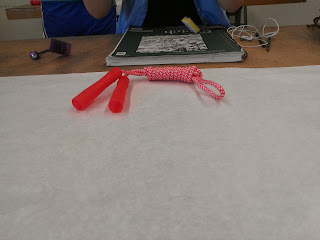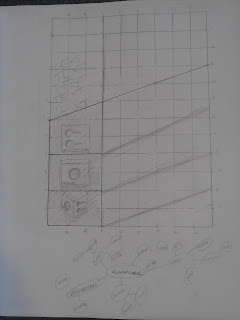Objectify
·
We judge objects as soon as we see them
·
Object speaks about who designed/manufactured it
·
First emperor of china – waging war to colonize
o
Each of archers made their own arrows so they
couldn’t share arrows
o
Standardized design of arrows so each arrow
would fit any bow
·
From the moment we wake up everything we see has
been designed one way or another
o
Every object has a story
·
Japanese toothpick
o
Serrated edge that you can break off to show it
was used and can be a stand for it
·
“Every object tells a story, if you know how to
read it.” –Henry Ford
·
design tries to understand people and what their
needs are
o
my thoughts: I like psychology too and almost
majored in it so that’s cool
o
look at the extremes so if you understand
extremes, the middle will take care of itself
·
Betsy’s pealer and Sam’s idea
o
Making it work for people with arthritis = good
for everybody
o
Rubberized bicycle grip
·
Starting out a project
o
Look at how the object is wrong
o
Develop models
§
Physical and digital
·
CAD – computer added design to make digital
o
Rapid prototyping
o
“lets put great design into every day things and
make these gadgets work better”
§
without people thinking about it
·
Dieter Rams
o
Design bonsai trees
§
So birds can fly in
o
Designing nature
o
Design is positive when clear and understandable
o
American company that takes design seriously –
Apple
§
Products give a very clear sense of the people
who designed it and made it
·
Apple/Design as a story
o
First imac
o
Think how do we connect to the product
§
Gets design out of the way
§
Not just arbitrary shapes, feels almost
undesigned
o
Macbook air creation
§
Push themselves on – can we do the job of six
parts with one
§
1 part provides so much functionality and
enables product
§
important in a product to have a hierarchy
§
an indicator has a value if it is indicating
something but if it isn’t indicating something, it shouldn’t be there
·
design moving from tangible to intangible
o
creates conflicts within design
o
3 phases of modern design
§
looking at the design in a formal relationship
·
form begets form
§
symbolism and content of what you’re dealing
with
·
the rituals that make up using things
·
cultural symbolism
§
looking at design in a contextual sense
·
looking at human and object relationship
o
cone vacuum
§
unobtrusive
o
dyson vacuum
§
color introduced to it to articulate the various
components of the vacuum
o
rhumba
§
relationship is to room it is cleaning, not to
humans
§
bionic hamster
·
attach hamster to it and hamster moves it
·
Design’s Relationship to form
o
Design is creating an environment that makes
people feel good
o
Removing anything that is unnecessary to create
unity instead of discord
§
Close to composing music
·
Designing new things
o
Satisfaction motivates us
o
Goal as a designer is to look into the future
and see what is going to happen and not what has happened
o
Design should be trying to offer products that
you want to keep and that you feel will stand the test of time
·
Design as an enterprise
o
Design has become a way for companies to add
value and charge more money for it
o
Things will be marketed in terms of design in
the future
o
Elitism and the idea of design
o
Target
§
Influenced pop culture thinking about influence
and culture of design
·
Good design distinguishes you and is a mark of
progress
·
Knowing it sets you apart as modern
§
Target lets you buy into good design and good
taste easily
o
Good design comes from the need of companies to
make more stuff and the reasons why people will buy them
o
Why we wont new things
§
Can do something different
§
Focused on now
§
Not focused on forever
§
Making new now look like then so people will buy
the new now?
·
Cars
o
Cars are frozen in time so the observer can look
at it and put motion in it by the way you scan it
o
Has to be a reflection of motional energy
o
Cars have a face
§
One expression forever
o
Challenges of car design
§
Assessing what cars will mean in the future
·
Will they be an expression of yourself or fade
into the background as just a mode of transportation
o
Real audience is ourselves – why is this the
right car for me? – making a statement to yourself about yourself
·
Mass Production of Design - Karim Rashid
o
Using industry to produce serialized goods
o
Techno organic world – organic but using new
technologies
§
Physical interpretation of the digital age
o
Archetypes
§
Cameras
·
Film designs the shapes of the camera but our
cameras don’t use film anymore so why are they still rectangles?
o
70% of the world is uncomfortable
·
Interaction Design – (name by) Bill Moddridge
o
Obsessive sketch
§
When the poets statements are obviously visible
the audience may become uncomfortable
§
Audience wants to be drawn into the poet’s world
§
Things are most natural when you don’t think
about them
§
Designers need to be plugged in to natural human
behavior
·
Sustainability
o
Trying to produce more and more stuff that we
need and don’t need
o
Creating for 10% of people who don’t need more
stuff when the other 90% are trying to afford to meet basic needs
o
Have to also design a way that products can be
disposed of in an environmentally friendly way
o
Most of what you design ends up in a landfill
somewhere
§
Doesn’t really occur to us as a society but now
to be a designer you have to be aware of it
o
If shelf life is less than 11 months than it
should be easily disposable
o
What we do is not how we create the individual
design, but what happens after it is done and people have used it
o
Thomas Overthun
§
Toothbrush
·
Small object creates a big piece of landfill
only months after it is created
·
Trying to use one handle your whole lifetime
o
Just replace heads
·
Design is a way to systematically ______
·
Design uses mind maps
·
Jane Fulton Suri
o
Looking at people for inspiration
o
Trying to make an empathic connection with
people in their context
o
People are not satisfied with what they buy,
they change them for their own use
·
Designers as the intellectuals of the future
o
Designers designing scenarios based on objects
that help people understand the consequences of their actions
o
Robots
§
As devices become more intelligent make the
objects dependent on humans
o
Design connects the world
o
Designers are far removed from the object
§
Object designed in another country
§
Makes the object seem too easy and too
superficial
o
Most meaningful objects are the objects that
matter and tell your story




















































